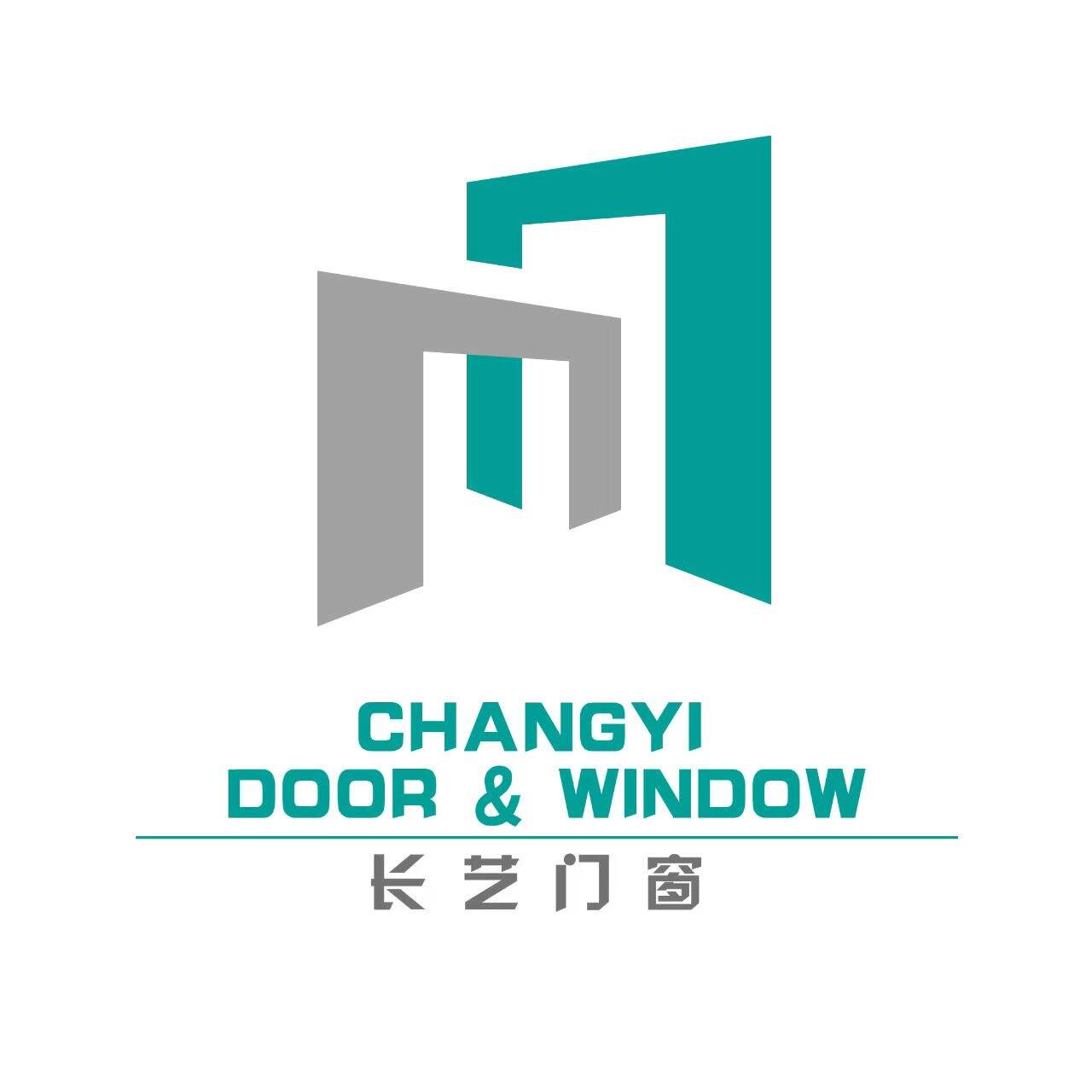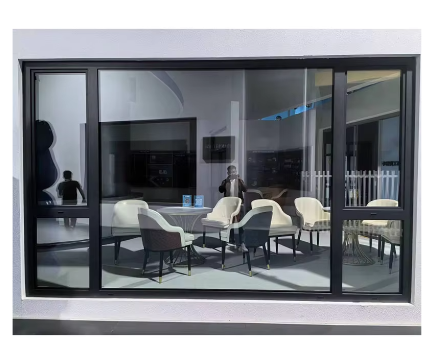الفروق الرئيسية بين النوافذ المنزلقة والدوارة النوافذ
آلية التشغيل: كيف يتم فتحها وإغلاقها
معرفة الأساسيات حول كيفية عمل نوافذ الألواح المنزلقة والنافذة العادية يجعل الاختلاف كبيراً عند اختيار الأنسب لأي غرفة معينة. تعمل النوافذ المنزلقة على مسار أفقي، لذا فهي تتحرك بسلاسة ذهاباً وإياباً دون أن تشغل مساحة إضافية من الداخل أو الخارج. ولذلك فهي خيار ممتاز للمناطق الضيقة التي لا تسمح بوجود مساحات فارغة، لأنها لا تمتد إلى الخارج إطلاقاً. أما النوافذ العادية فلها قصة مختلفة. فهي تفتح من جانب واحد مثل الأبواب، مما يسمح بدخول تهوية أكبر إلى الغرفة. ولكن لها شرط؟ تحتاج إلى مساحة خارجية كافية لتفتح بشكل صحيح. من حيث الظروف الجوية، عادةً ما تكون النوافذ المنزلقة أكثر مقاومة لعوامل الطقس في الظروف العاصفية بفضل إطاراتها المتينة. في المقابل، توفر النوافذ العادية إغلاقاً أكثر محكّية ضد المطر والرياح، مما يساعد على تقليل تكاليف التدفئة والتبريد على المدى الطويل. يلاحظ البعض فرقاً ملحوظاً في درجات البرودة خلال الشهور الشتوية اعتماداً على نوع النافذة المثبتة.
متطلبات التصميم والمساحة
إن تصميم النوافذ المنزلقة والنوافذ الرأسية يؤثر على مظهرها وعلى فائدتها في أي مساحة معطاة. تتميز النوافذ المنزلقة بمظهر عصري أنيق ويمكن أن تمتد لمساحات كبيرة نسبيًا. ولذلك فهي تعمل بشكل جيد عندما يرغب الشخص في الاستمتاع بمناظر واسعة أو إنشاء إحساس عصري داخل الغرفة. الرئيسية تقوم هذه النوافذ عمليًا بتعبئة تلك الجدران العريضة دون التأثير على الرؤية الخارجية. من ناحية أخرى، تميل النوافذ الرأسية إلى مظهر أكثر تقليدية ولكنها تحتاج إلى مساحة كافية حولها لتتمكن من الفتح بشكل صحيح. وهذا أحيانًا يعني ضرورة تحديد مواقعها بعناية داخل تخطيط الغرفة. إن نوع النافذة المختار يؤثر حقًا على مكان وضع الأثاث وذلك بسبب المساحة التي تشغلها وطريقة فتحها. عند اتخاذ القرار بين هذه الخيارات، يجد الأشخاص أنفسهم عادة يوازنون بين ما يبدو جيدًا من الناحية الجمالية وما هو عملي من حيث المساحة المتاحة. بل ويضطر بعض أصحاب المنازل إلى تقديم تنازلات بناءً على ميزانيتهم أو الخصائص المعمارية الموجودة مسبقًا.
مقارنة المزايا والعيوب
الزحف النوافذ : كفاءة الاستخدام للمساحة مقابل تهوية محدودة
إن النوافذ المنزلقة توفر بالفعل مساحة، خاصة عند التعامل مع غرف صغيرة أو زوايا ضيقة حيث لا يمكن استخدام النوافذ التقليدية التي تفتح نحو الخارج. إن طريقة انزلاقها أفقيًا تعني أنه لا يجب على الأشخاص القلق بشأن تحرير مساحة إضافية حولها للتشغيل. ولكن هناك أيضًا عيوب. عادةً ما تفتح هذه النوافذ نصف المساحة فقط، وبالتالي تسمح بدخول كمية أقل من الهواء الطازج مقارنة بشباك مفتوح بالكامل مثل نافذة العارضة التي تفتح على نطاق واسع. تواصل الدراسات إظهار أهمية التهوية المناسبة فعليًا. انظر إلى أي منزل يحتوي على تهوية أفضل، ومن المرجح أن تتحسن جودة الهواء الداخلي بشكل ملحوظ. وهذا يُحدث فرقًا حقيقيًا في مستويات الراحة اليومية والصحة العامة على المدى الطويل.
نوافذ الإطار المتحرك: ختم أفضل مقابل تعقيد ميكانيكي
تتمتع النوافذ العادية بسمعة جيدة عندما يتعلق الأمر بإغلاق الهواء الخارج بشكل محكم، مما يعني تقليل تسرب الهواء وبالتالي تحسين الكفاءة في استخدام الطاقة بشكل عام. يجد الأشخاص الذين يعيشون في مناطق يكون فيها الحفاظ على فواتير الطاقة منخفضة أمراً مهماً للغاية، أن هذه النوافذ مفيدة بشكل خاص لأنها تقلل من تكاليف التدفئة والتبريد. الجانب السلبي؟ هذه النوافذ تحتوي على أجزاء متحركة معقدة تميل إلى التآكل أو الحاجة إلى الإصلاح بعد بضع سنوات، مما يعني عادةً إنفاق المزيد من المال على الإصلاحات على المدى الطويل. سيشير معظم متخصصي النوافذ إلى النماذج العادية إذا كان الشخص يعيش في مكان بارد أو معرض للرياح بشكل كبير، حيث تكون العزلة الجيدة أمراً مهماً. لا تزال تستحق النظر رغم العمل الإضافي المطلوب للحفاظ عليها بشكل صحيح على مر السنين.
كفاءة الطاقة وأداء التهوية
إغلاق محكم في نوافذ الكاسينغ
تتميز النوافذ العادية من حيث ترشيد استهلاك الطاقة لأنها تُغلق بإحكام ضد التيارات الهوائية. ما يجعلها خاصة هو نظام القفل المُصمم على شكل خطاف، والذي يقوم فعليًا بدفع النافذة بشكل محكم ضد الإطار، مما يضمن عدم دخول الهواء البارد خلال فصل الشتاء. تشير الأبحاث إلى أن المنازل التي تحتوي على هذا النوع من النوافذ تكون عادةً أكثر كفاءة بنسبة 15 بالمئة مقارنةً بتلك التي تحتوي على نوافذ منزلقة. ولكن إليكم شيئًا يستحق التذكير به أيها الناس - إن كل تلك الخصائص الممتازة في الإغلاق لن تعمل إلا إذا تمت عملية التركيب بشكل صحيح. فإذا لم يتم تركيب نافذة الكاسيمنت بشكل مناسب، فقد لا تمنع تسرب الحرارة إلى الخارج، بل قد تسمح بخروج الحرارة من خلال الفجوات، مما يلغي تمامًا أي توفير كان من المفترض أن يحدث.
مرشدة نافذة مخاطر تسرب الهواء
بالتأكيد تتمتع النوافذ المنزلقة بميزاتها، لكنها تأتي أيضًا بعيوب من حيث التسرب الهوائي بسبب طريقة تصميمها المحيطة بالمسارات. فطبيعة عمل هذه النوافذ تخلق بشكل طبيعي فجوات تسمح بمرور الهواء البارد أو الدافئ، مما يؤدي إلى ارتفاع فواتير التدفئة والتبريد على مدار السنة. تشير بعض الدراسات إلى أن ما يصل إلى عشرين بالمائة من تكاليف الطاقة قد تضيع بهذه الطريقة! ومع ذلك، فإن الفحص المنتظم لهذه المسارات والختم يُحدث فرقًا كبيرًا. على أصحاب المنازل فحص الجزء السفلي من المسارات حيث يميل الغبار والأوساخ إلى التراكم بمرور الوقت، وتنظيفها جيدًا والتأكد من أن خراطيم الختم المطاطية لا تزال تنطبق بإحكام على الإطار. عندما تُجرى هذه الصيانة بشكل صحيح، فإنها تحافظ على دفء المنازل في الشتاء وبرودتها في الصيف دون إهدار المال على استهلاك الطاقة الزائد شهريًا.
اعتبارات الصيانة والأمان
مقارنة سهولة الوصول للتنظيف
تجعل النوافذ المنزلقة تنظيفها أسهل بكثير، خاصة من داخل المنزل نظرًا لامتلاكها لزجاجات تتحرك جانبًا بدلًا من الفتح نحو الخارج. القدرة على تحريك هذه الزجاجات تعني أنه لا حاجة لأصحاب المنازل لفتحها على مصراعيها فقط لمسح الأسطح الزجاجية، وهو أمر مهم جدًا في نوافذ الطوابق العليا حيث يصعب الوصول إليها. لكن الأمر مختلف تمامًا مع النوافذ الركامية. فتلك التي تُفتح بمقابض تكون أصعب في التنظيف، خاصة إذا كانت مثبتة في مكان مرتفع. يصبح التنظيف أقل راحة وأكثر صلة باستخدام السُّلالم وأعمدة التمديد. كما أن الصيانة الدورية تلعب دورًا كبيرًا هنا أيضًا. فالنوافذ التي تظل نظيفة لفترة أطول لن تتراكم عليها الأوساخ بسرعة، وبالتالي يقل احتمال تحول بقع الماء إلى بقع دائمة أو حدوث تلف في السدادات نتيجة تراكم الرطوبة بين الإطارات.
أنظمة القفل ومرونة مقاومة الاختراق
من حيث الأمان، فإن النوافذ العادية تتفوق عادةً على النوافذ المنزلقة لأنها تأتي مزودة بأنظمة قفل متعددة النقاط تقاوم بشكل فعال محاولات الاختراق. تُغلق النوافذ العادية بإحكام لدرجة أن معظم اللصوص يتجاوزونها مباشرةً، نظرًا لأن القفل مدمج داخل الإطار نفسه ويصعب التغلب عليه. هذا لا يعني أن النوافذ المنزلقة غير آمنة تمامًا، ولكنها بدون تعزيز كافٍ، قد تتحول إلى نقاط دخول للصوص الذين يستطيعون رفع الألواح الزجاجية بسهولة من على مسارها. يؤكد خبراء الأمن دائمًا على أهمية اختيار تصميمات نوافذ مقاومة للكسر، وهي نقطة يجب أن ينتبه إليها أصحاب المنازل عند ترقية منشآتهم.
تحليل التكلفة والتطبيقات المثالية
التكاليف المسبقة مقابل الادخار على المدى الطويل
تُعد النوافذ المنزلقة أرخص في البداية مقارنةً بالنوافذ الباهو، لذا فهي شائعة بين الأشخاص الذين يراقبون ميزانيتهم. يميل أصحاب المنازل الذين يسعون لخفض التكاليف الأولية بشكل خاص إلى الاتجاه نحو هذه الخيارات أثناء المشاريع الكبيرة مثل بناء منزل من الصفر أو القيام بتجديدات كبيرة. ولكن إليك المعضلة: على الرغم من أن النوافذ المنزلقة قد تبدو صفقة أفضل في الوقت الحالي، إلا أن النوافذ الباهو تُوفّر المال على المدى الطويل لأنها تُعزل بشكل أفضل بكثير. كما تُقلّل النوافذ الباهو من فاتورة التدفئة الشهرية وتلك الخاصة بتكييف الهواء أيضًا، لذا فإن ما يبدو مكلفًا في البداية قد يُحقق عائدًا بعد بضع سنوات. عند اختيار النوافذ لأي نوع من أعمال البناء، من المربح أن تنظر إلى ما وراء السعر المعروض فقط. فكّر في جميع التكاليف الخفية أيضًا مثل رسوم التركيب واحتياجات التنظيف الدورية بالإضافة إلى فواتير الخدمات المستمرة. أن تكوّن صورة واضحة عن كل هذه الأمور يساعد أي شخص على اتخاذ قرار بشأن ما إذا كان الإنفاق الإضافي الآن سيوفّر المال لاحقًا.
أفضل الحالات الاستخدامية: احتياجات الخروج والأساليب المعمارية
تعمل النوافذ المنزلقة بشكل جيد حقًا في المنازل الحديثة التي تتسم بتصاميمها النظيفة والبسيطة. فهي تندمج بسلاسة مع الاتجاهات المعمارية الحالية دون أن تبدو خارج السياق. ما يميزها هو الخطوط المستقيمة التي تتيح رؤية واضعة للخارج دون أي عوائق، مما يعزز بلا شك مظهر أي مساحة داخلية عصرية. أما النوافذ الرأسية فتحكي قصة مختلفة. فهي عادة ما تكون أكثر ملاءمة للمناطق القديمة أو عندما يرغب أصحاب المنازل بفتحات كبيرة للحصول على هواء نقي وضوء نهار وفير. مظهرها التقليدي يتماشى بشكل جميل مع المنازل التي بُنيت في فترات سابقة، لتمنح مظهرًا جيدًا إلى جانب فوائد عملية. في بعض الأحيان تحدد لوائح البناء نوع النوافذ التي يجب تركيبها لتكون بمثابة مخارج طوارئ، لذا من المهم جدًا التحقق من القوانين المحلية قبل اتخاذ القرارات. يختار أصحاب المنازل بذكاءً نوافذ تبدو جيدة وفى نفس الوقت تتوافق مع جميع متطلبات السلامة الضرورية، لأنه في النهاية لا أحد يرغب في مواجهة مشاكل لاحقًا.
الأسئلة الشائعة
ما هي الفروقات الرئيسية بين نوافذ الشد والنوافذ الدوارة؟
تتمثل الفروقات الرئيسية في آليات تشغيلها، وجمال تصميمها، وكفاءتها في استهلاك الطاقة، والتهوية. تعمل النوافذ滑iding أفقياً وتقدم تصميماً حديثاً، بينما تتأرجح نوافذ casement خارجياً وتتميز بقدرات إغلاق قوية مما يجعلها موفرة للطاقة.
أي نوع من النافذة هو أكثر كفاءة في استهلاك الطاقة؟
عادة ما تكون نوافذ casement أكثر كفاءة في استهلاك الطاقة بسبب قدرتها العالية على الإغلاق المحكم التي تقلل من تسرب الهواء بشكل فعال.
كيف تختلف متطلبات الصيانة بين النوعين؟
توفر نوافذ sliding سهولة الوصول لتنظيفها بسبب ميزة انزلاقها الأفقي، بينما قد تتطلب نوافذ casement جهداً أكبر للتنظيف بسبب آلية المقابض الخاصة بها.
ما هي الميزات الأمنية التي تقدمها نوافذ الإغلاق الجانبي؟
تتميز نوافذ الإغلاق الجانبي عادة بميزات أمان أفضل مع أنظمة إغلاق متعددة النقاط، مما يجعل من الصعب اختراقها مقارنة بنوافذ السحب.

